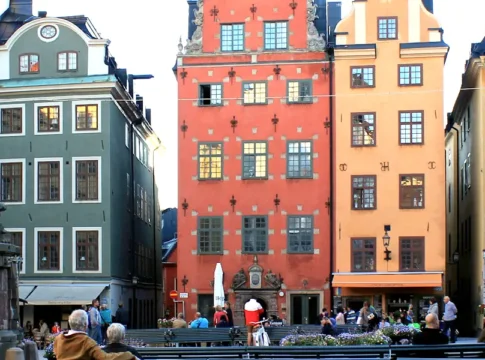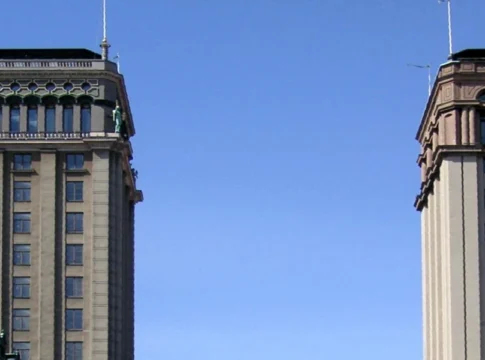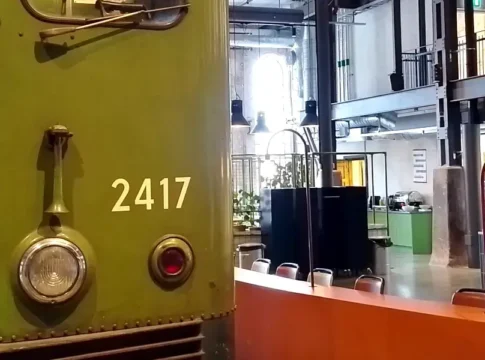 Photo: Øyvind Holmstad (CC BY-SA 3.0)
Photo: Øyvind Holmstad (CC BY-SA 3.0)
During a Diamond League event at Stockholm Stadion, Armand “Mondo” Duplantis soared to a new world record of 6.28 m in the pole vault—his 12th global mark—electrifying local fans and making history on home soil.
Stadion: Stockholm’s historic 1912 Olympic Arena
Stockholm Olympic Stadium—known locally as Stockholms Stadion—stands as one of the world’s more iconic sports venues. Nestled in the Östermalm district, this architectural gem was completed between 1910 and 1912 to host the 1912 Summer Olympics. Today, it holds the distinction of being the oldest Olympic stadium still in active use.
Originally planned as a temporary wooden arena, the project took a visionary turn under architect Torben Grut. Embracing Sweden’s national romantic style and classical influences, Grut designed a permanent structure built from brick, cement, and stone. The stadium’s dark façade and sculptural details reflect both cultural pride and timeless elegance.
Stockholms Stadion officially opened on June 1, 1912. It served as the centerpiece for Olympic events such as athletics and multiple sports competitions—cementing its status as a pioneer of modern stadium design and a landmark of global sporting history.






Architectural significance
Stockholm’s Olympic Stadium is celebrated for its architectural nods to antiquity. Designed to evoke the grandeur of ancient arenas, the structure also mirrors the fortified charm of medieval city walls. Its striking red brick façade is adorned with sculptural reliefs and decorative elements crafted by prominent Swedish artists, including Carl Eldh.
This fusion of national romanticism and classical form results in a stadium that is both historically resonant and visually compelling. Seating capacity varies by event: approximately 13,145 to 14,500 for sports, with the ability to expand to nearly 33,000 for concerts—making it a versatile venue with enduring appeal.
The 1912 Olympic Games
Held from May 5 to July 27, the 1912 Summer Olympics in Stockholm marked the fifth edition of the modern Games. Dubbed the “Swedish Masterpiece,” this Olympiad earned acclaim for its exemplary organization and logistical precision.
A total of 2,409 athletes from 29 nations competed in 107 events across 14 sports. This edition was especially groundbreaking—it introduced the modern pentathlon, as well as women’s swimming and diving events, expanding the scope and inclusivity of the Games.
Among the standout athletes was American Jim Thorpe, who stunned audiences by claiming gold in both the pentathlon and decathlon. Finnish long-distance runner Hannes Kolehmainen also rose to fame, capturing multiple gold medals and setting new benchmarks in endurance racing.




Stockholm 1912 was a turning point in Olympic history. It marked the first use of electronic timing and public address systems, paving the way for technological innovation in sports. The Games also achieved global representation for the first time, with competitors from all five inhabited continents—notably including Japan’s Olympic debut.
Despite a few controversies—such as the cancellation of boxing due to Swedish opposition—the Stockholm Olympics set enduring standards in sportsmanship, inclusivity, and event management.
Modern-day use
Over a century after its Olympic debut, Stockholm’s Olympic Stadium remains a vibrant hub of sports and culture. It continues to host the annual DN Galan—now known as Bauhaus Galan—a prestigious Diamond League athletics meet that attracts world-class competitors. The stadium also plays a key role in the Stockholm Marathon, where runners finish their race with a final lap on its historic track.
Beyond athletics, the venue serves as a celebrated stage for concerts, welcoming renowned Swedish and international artists alike. Its adaptable design and iconic setting make it a sought-after destination for live events year-round.
To preserve its legacy while meeting modern standards, the stadium has undergone careful renovations. Notably, the North Stand was rebuilt in the late 1990s to integrate updated facilities without compromising the architectural vision of Torben Grut. These updates ensure that the Stadion remains both functional and historically faithful—a living landmark at the heart of Stockholm.
Visiting the Stadion
For visitors to Stockholm, the Olympic Stadium is more than a historic site—it’s a living piece of Sweden’s cultural and athletic identity. Whether attending an event or simply exploring its storied grounds, tourists can step into the legacy of the 1912 Games and witness a venue that continues to host world-class performances.
Set within the lush expanse of Kungliga Nationalstadsparken (The Royal National City Park), the stadium is both centrally located and scenically surrounded. Its accessibility and setting make it an ideal stop on any Stockholm itinerary—whether you’re a sports enthusiast, history buff, or simply enjoying a walk through one of Europe’s most charming capitals.
Visit Info
![]() Stockholm Olympic Stadium
Stockholm Olympic Stadium
![]() Stockholms Stadion
Stockholms Stadion



